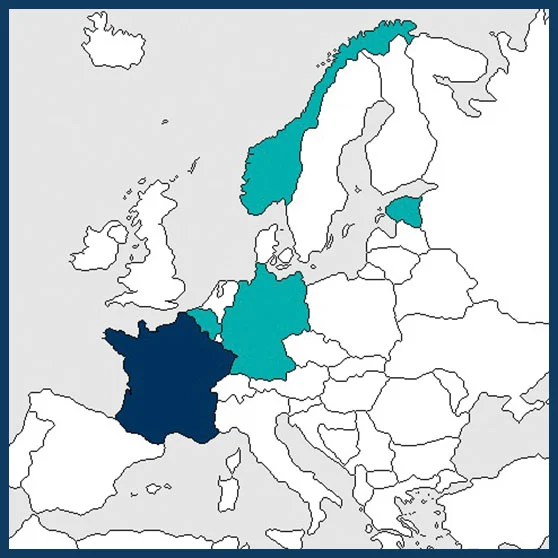02-2017 to 01-2020
€ 1,495,876
Dr. Philip K. Roche
philip.roche@irstea.fr
IRSTEA, Antony, FRANCE (Coordinator)
Research Institute for Nature and Forest, Brussels, BELGIUM
Estonian University of Life Sciences, Tartu, ESTONIA
Institute for Social-Ecological Research, Frankfurt, GERMANY
University of Kiel, Kiel, GERMANY
Norwegian Institute for Nature Research, Trondheim, NORWAY

According to the European Commission definition, Green Infrastructure (GIs) is “a strategically planned network of natural and semi-natural areas designed and managed to deliver a wide range of ecosystem services such as water purification, air quality, space for recreation and climate mitigation and adaptation” inside urban areas. With the implementation of its Green Infrastructure Strategy, the EU promotes the implementation of nature-based GI solutions to cope with multiple issues present in cities throughout the continent. Indeed, GI can be approached through the multiple benefits they provide on economic, social, environmental and human health related issues. The IMAGINE project team supports the idea that sustainable territorial management requires a transition from the management of natural resources that degrades the ecological integrity of ecological systems to an adaptive management that preserves it while improving human wellbeing.
Using a multidisciplinary approach across six case study territories spanning a European north-south gradient from the boreal zone to the Mediterranean, the IMAGINE project aims at quantifying the multiple functions, ecosystem services and benefits provided by Green Infrastructures (GI) in different contexts from rural to urban.
IMAGINE will provide guidelines and elaborate ready-to-use methods for an integrative management of GI multi-functionality. In order to stimulate and enhance ecosystem services performance of GI, a toolbox of management and restoration techniques will be prepared. These tools will be based on state-of-the-art knowledge regarding the interacting environmental (abiotic soil and water characteristics), structural (size, shape, spatial configuration of the network) and biological (species composition, structure, production) GI-properties that are required for the optimal provisioning of ecosystem services by GI. This way, the IMAGINE project will not only produce new knowledge on the relationship between the management, ecosystem integrity and ecosystem-service-based multi-functionality of GI, but also provide local stakeholders with science- and place-based arguments, regulatory mechanisms and decision tools for a sustainable landscape manage- ment.
IMAGINE will conduct its transdisciplinary research activities in close contact with stakeholders (land managers, municipalities, contractors in planning, design and building activities, nature conservation services, NGOs and the wider public as users). We will test our approach on the case study territories with two main gradients: rural-urban gradient within case studies and latitudinal across case studies.
The IMAGINE project will have 2 meetings per year to be organised within the Case study sites in order to be able to exchange with stakeholders. The final workshop will aim to build future capacity for implementation with the presentation of a guidance report to local/ regional stakeholders including land users, beneficiaries of ecosystem services and policy makers (Stakeholders, Policy makers, Citizens, NGOs, experts). We also plan to deliver 3 user-friendly guides: How- To Management and Restoration of GI, How-To Ecological Integrity Assessment, How-To ES and EDS Assessment and Mapping for Local Stakeholders.